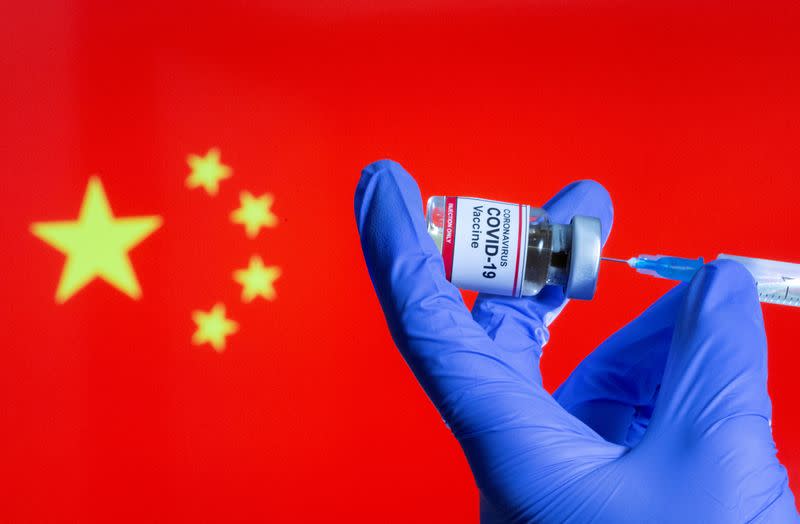BEIJING (Reuters) – China’s chief disease control official said the country was formally considering mixing COVID-19 vaccines as a way to further increase the vaccine’s effectiveness.
The available data show that Chinese vaccines are lagging behind, including Pfizer and Moderna, in terms of efficacy, but require less stringent temperature control during storage.
The currently available vaccines “do not have very high protection rates”, Gao Fu, the director of the Chinese Centers for Disease Control and Prevention, said at a conference in the Chinese city of Chengdu on Saturday.
“Vaccination with different technical lines is being considered,” he said.
Gao said taking steps to “optimize” the vaccine process, including changing the number of doses and the time between doses, was a “definitive” solution to the efficacy issues.
China has developed four household vaccines that have been approved for public use, and an official said on Saturday that the country is likely to produce 3 billion doses by the end of the year.
A COVID-19 vaccine developed by China’s Sinovac has been found to have an efficacy rate of just over 50% in Brazilian clinical trials. A separate study in Turkey said it was 83.5% effective.
No detailed efficacy data have been released on vaccines made by Sinopharm in China. Two vaccines developed by its units are said to be 79.4% and 72.5% effective, respectively, based on interim results.
Both vaccine manufacturers provided data on their COVID-19 vaccines indicating the levels of efficacy in line with those required by the World Health Organization, a WHO panel said in March.
China has shipped millions of its vaccines abroad, and officials and state media have vehemently defended the shots while questioning the safety and logistical capabilities of other vaccines.
“The global test data for vaccine protection is high and low,” Gao told state-run Global Times on Sunday.
“How one can improve the protection rate of vaccines is a problem that global scientists need to consider,” Gao said.
(Reporting by Cate Cadell; additional writing by Ryan Woo; editing by David Evans)
